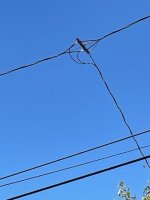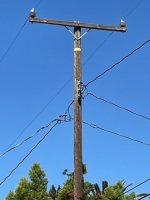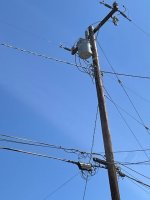Keep in mind that there are other potential causes of the voltage you measured.
You have a symptom, and did an internet search to find a potential cause. Stray current from primary distribution could be one cause.
The phone company has it's own wires, and their ground is clearly not bonded to your electrical system ground. That is a serious problem that should be fixed. The elevated voltage might be coming from the poco lines.
Take a look at this recent thread. We all jumped on the stray voltage explanation, but the OP traced the problem to a neighbor's well....
I have recently had issues with my utility creating a high ground potential on my neutral and thus ground circuits. Service is fed from an overhead 2-phase 15 kva transformer directly to the main which is properly bonded and grounded. There is a sustained 20-25 vac potential between any grounds...
forums.mikeholt.com








